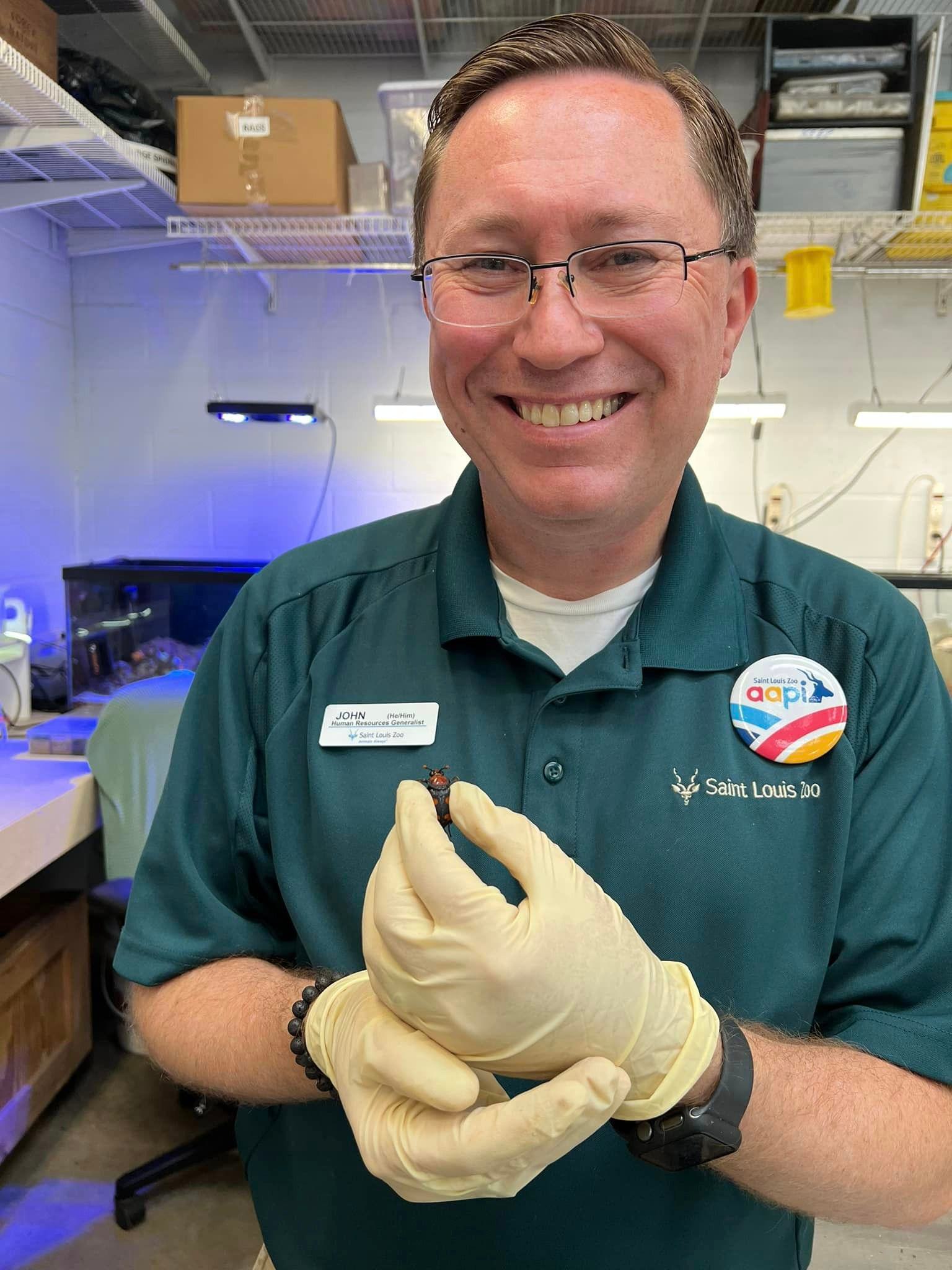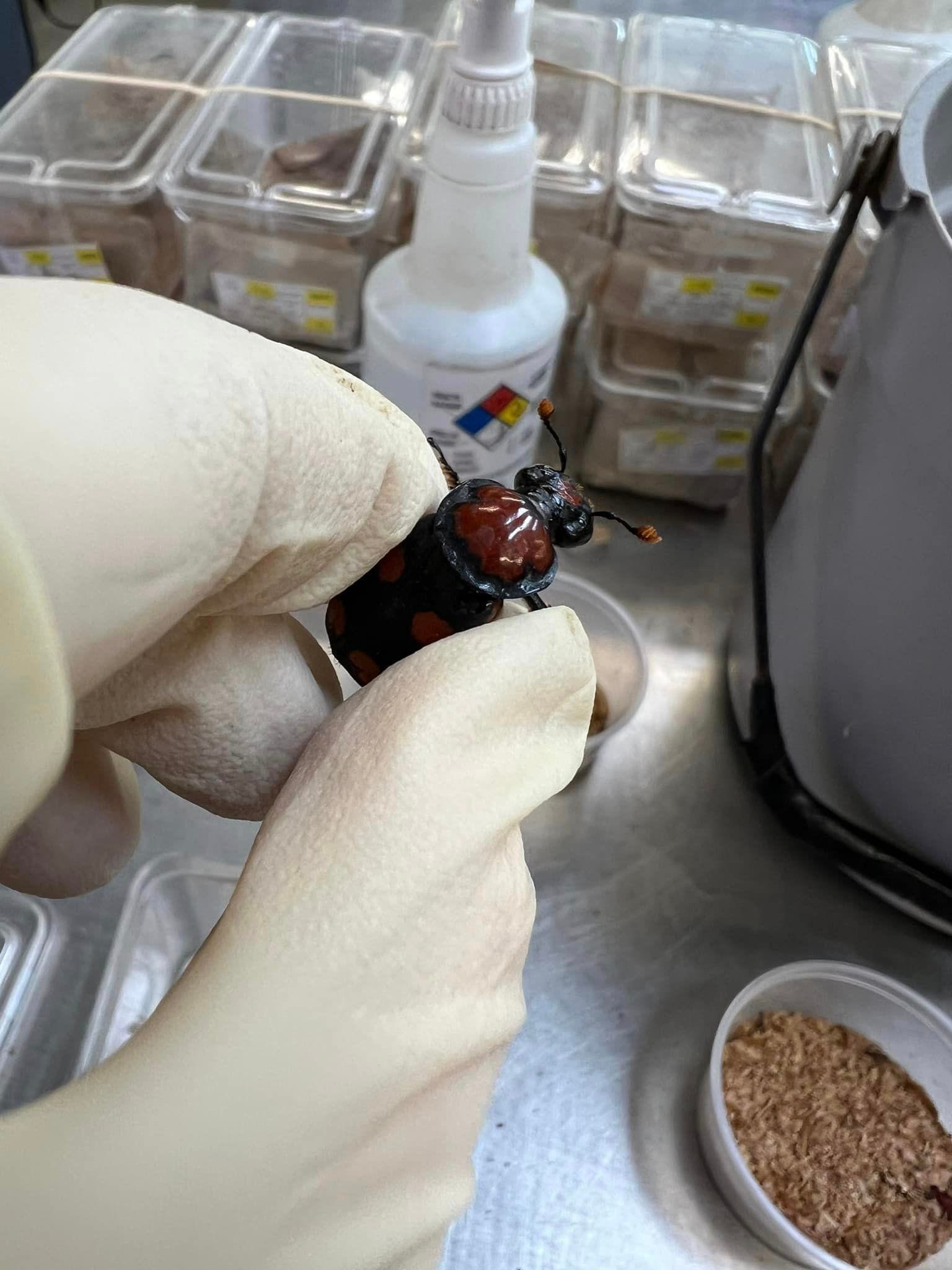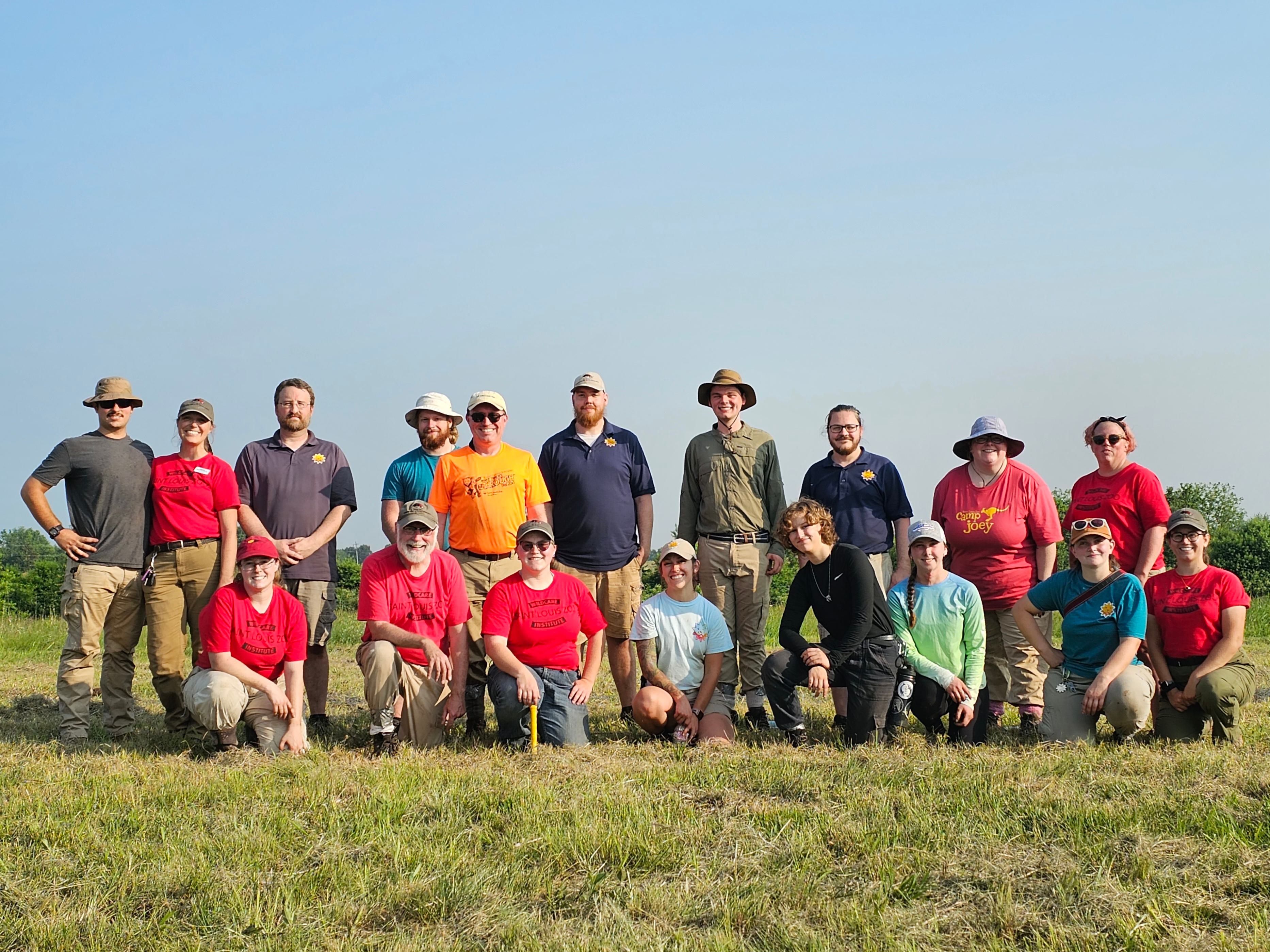Author: Saint Louis Zoo Human Resources Generalist John Russell, III

From a very early age, I knew I wanted to work at Saint Louis Zoo. Growing up in St. Louis County, the Zoo has always held a special place in my memories, as it does for countless others. Life took me in different directions, and I accidentally ended up in Human Resources in 2001. I have worked for some truly wonderful companies in my career, and some that I now wish were not even on my resume. When I was working for my most recent employer, I jokingly (not really) informed my boss that there were only three organizations that I would leave that one for – Anheuser-Busch, the St. Louis Cardinals, or the Saint Louis Zoo. The first two had HR positions open up, and I eagerly applied. Strike One. Strike Two. Then in November of 2017, I got the call that I had waited literally about a decade for; the Saint Louis Zoo was hiring in HR, and they wanted to talk to ME!
Fast forward to December of 2022. As I sat at my desk, roughly around the time of my five-year Zoo-aversary, I was elbow deep in hiring preparations for the 2023 season. When I tell you that I love what I do, it is not tongue and cheek. I genuinely love my job! But five years in, I began to wonder, “What else can I do to help further the Zoo’s mission of conservation?” It was no longer enough for me to just hire the folks that do the work…I wanted to get my hands dirty with conservation efforts!

In an almost knee-jerk reaction, I emailed Bob Merz, Assistant Director, Saint Louis Zoo WildCare Institute, to see if there was something I could do with the American burying beetle program. Admittedly, I knew that this field work was relatively close to home, and I thought it might be a good place for a novice to get their feet wet. Within a couple hours, Bob had responded and offered to include me in the preparation of the beetles for release into the wild, and subsequently to travel with the group to help with the reintroductions themselves!
In my immediate reaction of excitement, I almost simultaneously became engulfed with the feeling of, “What am I getting myself into? I don’t know anything about the American burying beetle, other than it’s an endangered species. Maybe I should recant my request?”

Once the butterflies left my stomach (pun intended), I decided this was going to be a great experience for me, so I signed up for a couple of shifts working in the Bayer Insectarium to help feed the beetles and clean their shoebox-sized habitats. The staff at the Insectarium could not have been more welcoming! Within about five minutes, I was in love with the beetles. Not many Human Resources professionals can say that they spent half of their day caring for an endangered species! I spent a total of about six hours caring for these vulnerable creatures, in absolute awe of the fact that I was now making a direct difference in the survival of a species that, without the efforts of programs like ours, would likely not survive on its own.
My involvement didn’t end there! In June of this year, I traveled to the Taberville Prairie Conservation Area to assist in the reintroduction of approximately 76 pairs beetles in two locations. After arriving at the Zoo at around 8:00 a.m., we made the trek about four and a half hours southwest of the Zoo, nearing the border of Kansas and Missouri. After a brief stop at the Missouri Department of Conservation offices, we rolled right out to the field. Fortunately, for someone who spends the bulk of their day in an office at a computer, the weather was surprisingly bearable. Having treated my clothes with permethrin, lathered my skin with bug spray and sunscreen, and wrapped my socks to the bottoms of my pants with duct tape, I was ready to hit the dirt, quite literally!

The time had arrived, with several individuals from another zoo, as well as some of our very own Zoo ALIVE teens, gathering at this field in what felt like the middle of nowhere, lining up to begin the most strenuous part of the reintroduction: digging the holes. Once the holes were each about shovel head deep, it was time to create a burial chamber. I gently placed a quail carcass in the burial chamber, and then… it was SHOWTIME!
I was finally, yet oh so carefully, placing one male and one female American burying beetle in their new homes, with a fresh meal, and hopefully, a desire to get acquainted. It was pretty remarkable knowing how far these beetles, and I, had come in just a few short weeks and to know that I, the HR professional with no formal knowledge of these creatures, was able to directly help contribute to their well-being and potential to thrive in their return to the wild. Words cannot describe the joy and pride I had standing on that prairie. (Seriously, I have been thinking about that last sentence for about five minutes, that’s all I could come up with.)
Once our beetles were nestled in, it was time to pack up and head to the next site to repeat this process. Once that was complete, it was time to journey home by way of an overnight stay at a local hunting lodge. Once showered, it was fitting to just sit and relax with some of the others and discuss “all things beetle.” I made my way to the darkest bedroom I have ever slept in, stretched out, and dozed off with a feeling of pure fulfillment. I could hardly wait for the next trip, two weeks later.

I often tell people that I have been working my dream job for the last five and a half years. I hope people know that is a genuine sentiment. The Saint Louis Zoo is a place that holds magic for millions of people, employees and guests alike, and now it holds even more magic for me personally. My hope is that my unlikely journey to participate in our conservation efforts show others that you do not have to be a professional conservationist to be able to make an impact. I encourage anyone that has the ability to, whether on Zoo grounds or in the field, to give back in some way. If you are like me, your joints will hurt for about 12 hours, but your memories, and the species you assist, will carry on for a long, long time.

